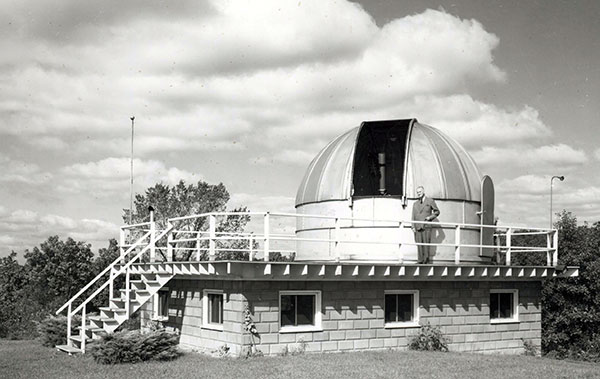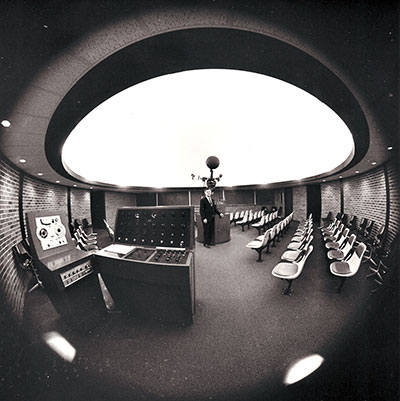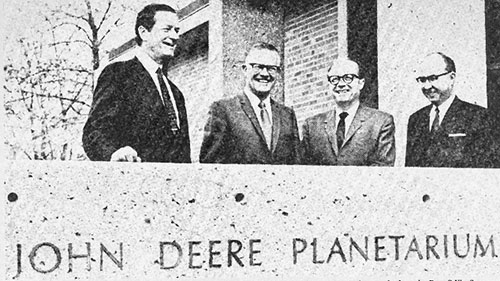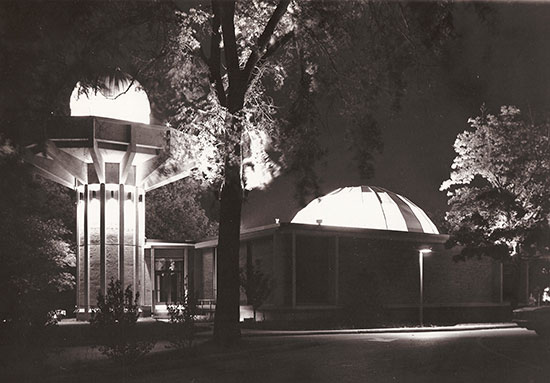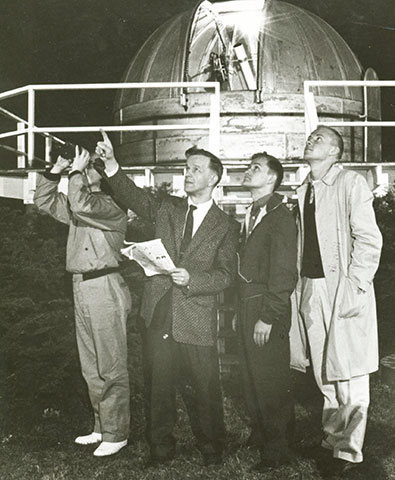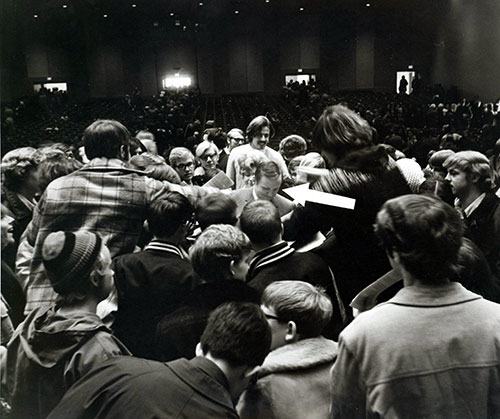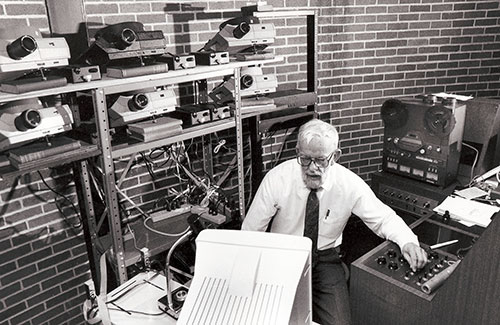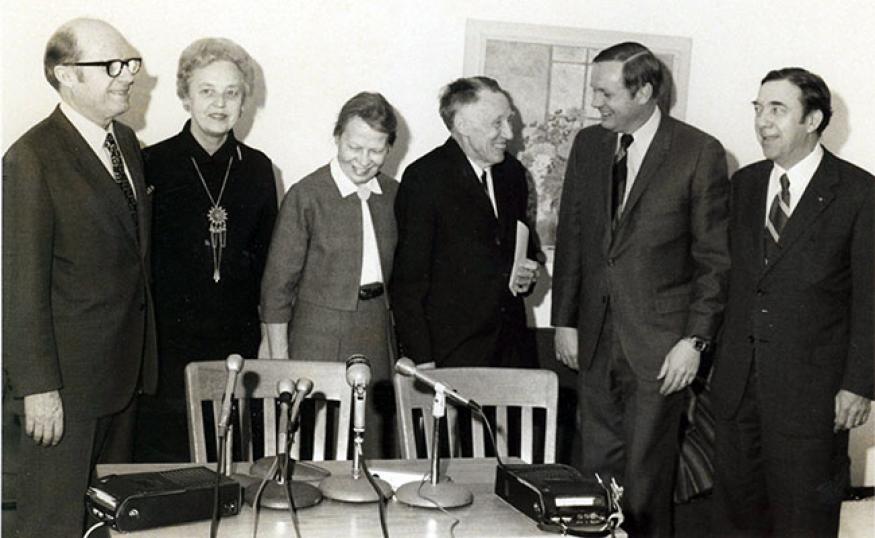
A passion for the stars, a mission for Augustana
In 1969, a Saturn V rocket thrust Apollo 11 towards the moon. That same year, Augustana College threw open the doors to its new John Deere Planetarium and Carl Gamble Observatory.
Both successfully completed the mission. Neil Armstrong became the first human to step on the moon and Apollo 11's work was done in just eight days. Augustana's mission, giving the knowledge of stars, planets and nebulae to thousands, was open-ended. In fact, its work has stretched over decades of learning and wonder. On May 2, the college celebrated the 40th anniversary of the planetarium and observatory with a special open house.
How did Augustana College come to have its own planetarium and observatory? It's not usual. Few small liberal arts colleges can boast such facilities.
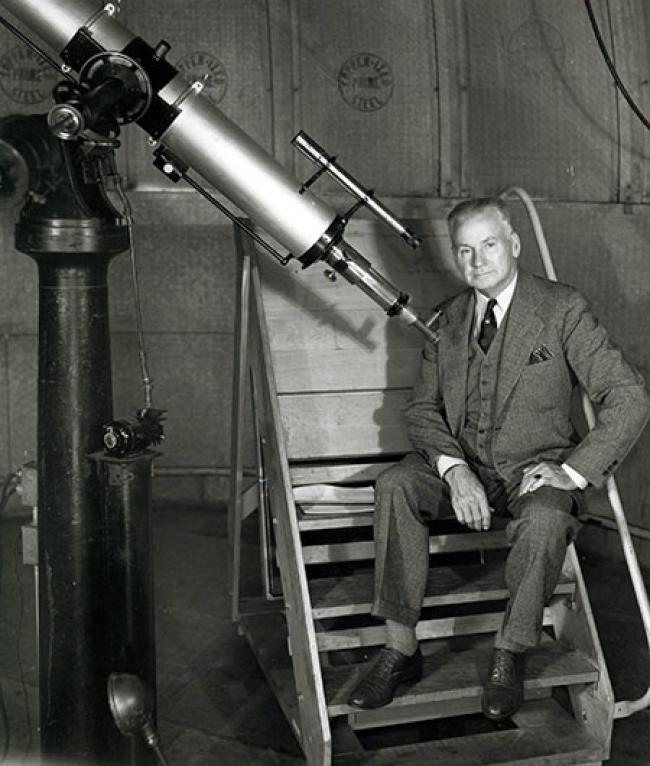
A passion for the stars
In Augustana's case, it all started on a beautiful clear night in January on the roof of the Pioneer Hotel in Tucson, Ariz. A young Moline businessman, Carl H. Gamble, stood on the roof with a friend, admiring the view.
It was a pivotal moment, Gamble told an interviewer in 1948, some 40 years after the fact. "We had binoculars and my friend remarked, 'The Orion nebula is beautiful tonight.' I had never heard of it. I picked up the binoculars and something snapped inside of me that just set me going on that hobby of mine."
Gamble returned home and read all the books about astronomy in the public library. He borrowed a telescope but that hardly sufficed. By 1936 he'd founded the local Popular Astronomy Club with more than 100 members. In 1941, he built Sky Ridge Observatory at his home and equipped it with a 5 1/2 inch Zeiss telescope under a dome that was actually the top of a grain silo. Sky Ridge became a community resource he happily shared with anyone who was interested, and it was the headquarters of the club until his death in 1958.
That's when Augustana entered the picture. The astronomer had willed his observatory, equipment and telescope to the college, and the board of trustees accepted the club's idea that a planetarium should be built along with an observatory for the equipment.
Groundbreaking was June 19, 1967. The John Deere Planetarium and Carl Gamble Observatory were dedicated May 2, 1969. The project had cost $577,000.
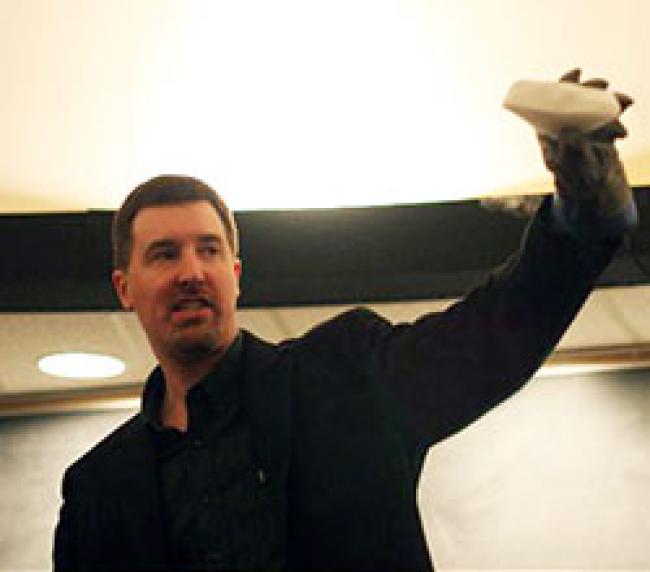
A teacher's heart
"What more appropriate symbol might there be of the contemporary world, and man's relentless drive to learn about the universe?" asked college president Dr. C.W. Sorensen at the dedication ceremony. "What better symbol is there of the freedom of inquiry, as man, respectful of his heritage and curious about his future, now peers boldly into space, seeking openly and honestly to explore whatever there is?"
From its opening until today, the John Deere Planetarium and Carl Gamble Observatory have been visited by thousands of children, students, parents and citizens, reminiscent of the steady stream of people who crowded Gamble's lawn at Sky Ridge for a decade, all looking upward.
Today, Augustana students use the observatory for telescope viewing sessions in astronomy classes and taking data in classes for physics majors. Astronomy students also use the planetarium, said director Dr. Lee Carkner, but its main function is community outreach.
This doubtless would have pleased Gamble. Although he served Deere & Co. for 42 years as a manager of one of its largest plants, his heart was elsewhere.
"This man, in his youth, prepared himself to become a teacher," said Dr. F.M. Fryxell in 1951 when the college awarded Gamble an honorary doctor of humanities degree. "Circumstances diverted him into business. But Carl Gamble remained at heart a teacher.
"Through the years Carl Gamble has opened the eyes of thousands to unsuspected wonders... He has influenced thousands also by his glowing example of what one man's life can become when it is dedicated selflessly to others."
The 130mm Zeiss refractor telescope Gamble willed to Augustana is in storage now, replaced by a Celestron C14 computer-driven 14-inch reflector. The Spitz-A-3 projector in the planetarium is still in use and still works perfectly, Dr. Carkner said, though a newer, digital device would make programming easier and offer some new opportunities.
"Both the planetarium and the observatory will need upgrades as time goes on," he said. "But while the specifics of the programs might change, we will still follow the mission of bringing astronomy to the public."

